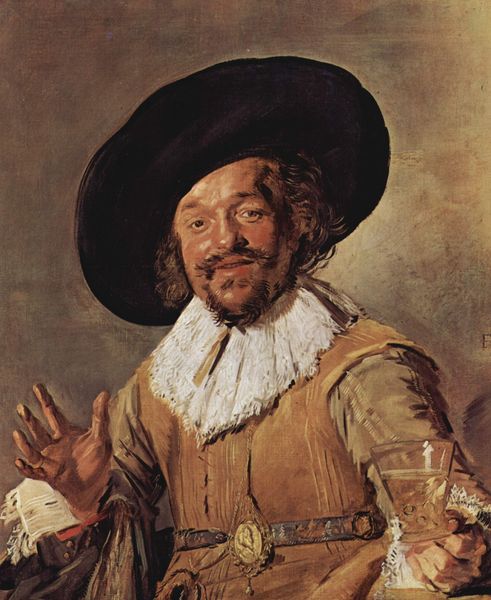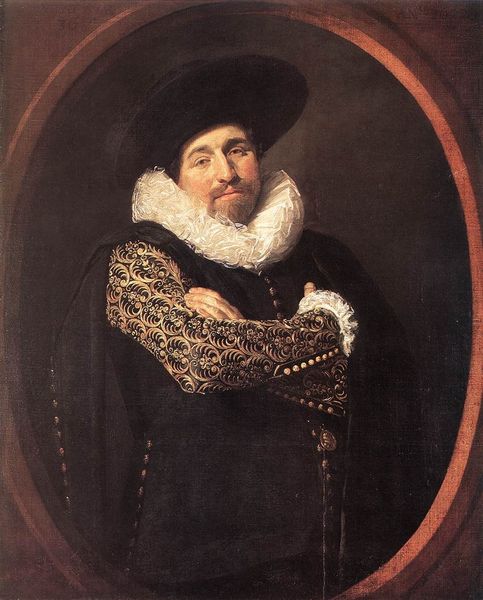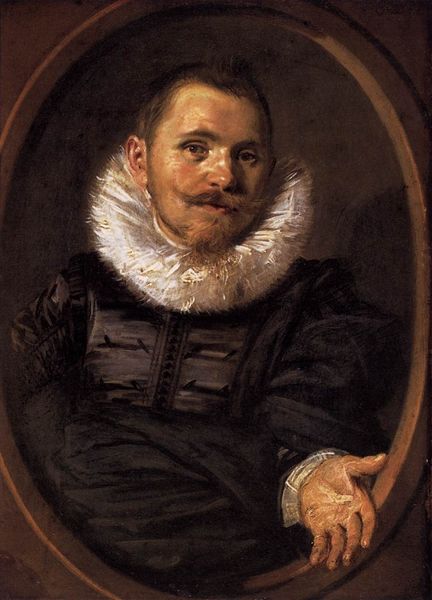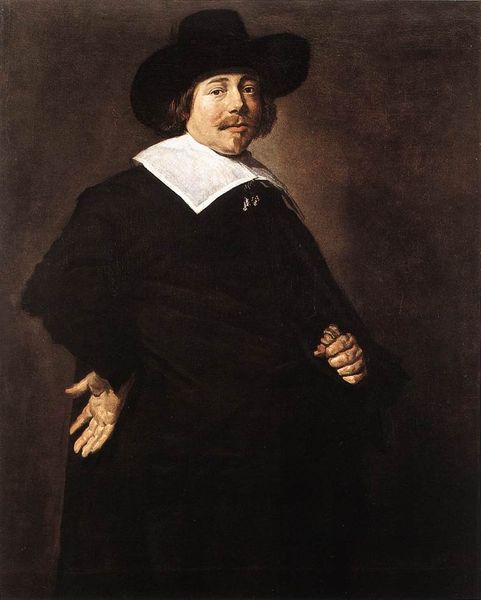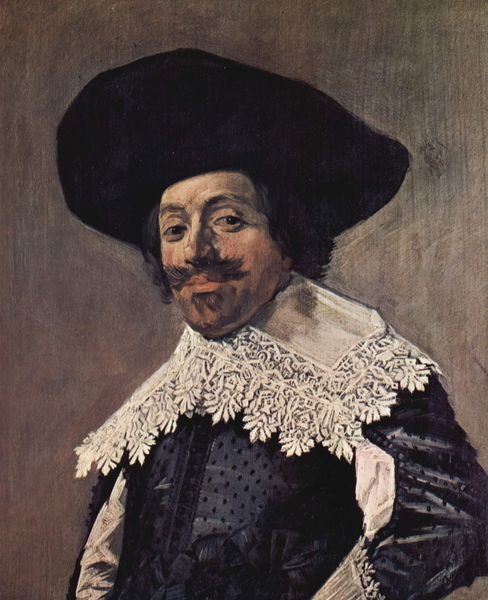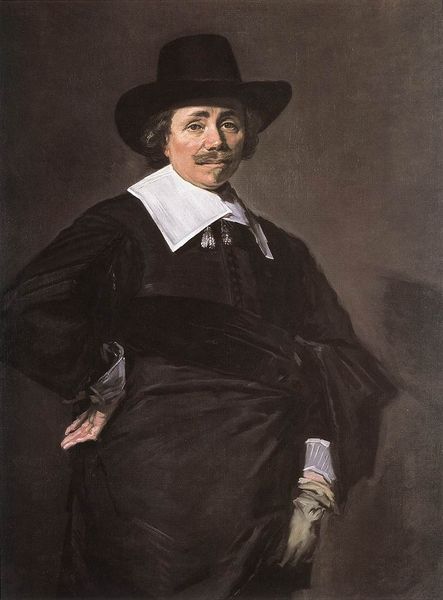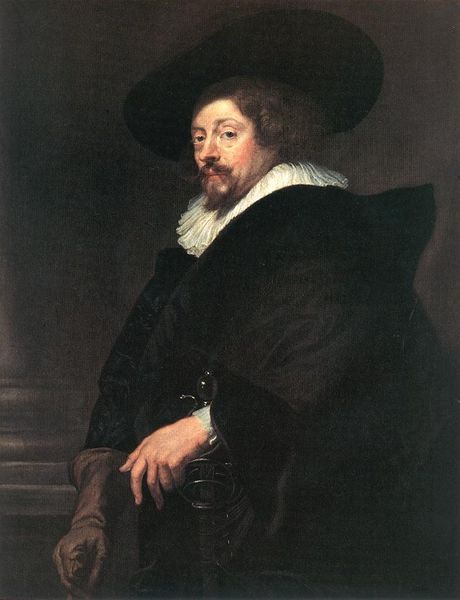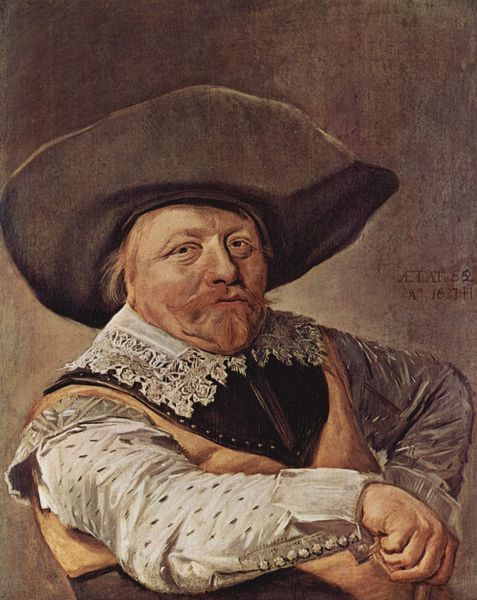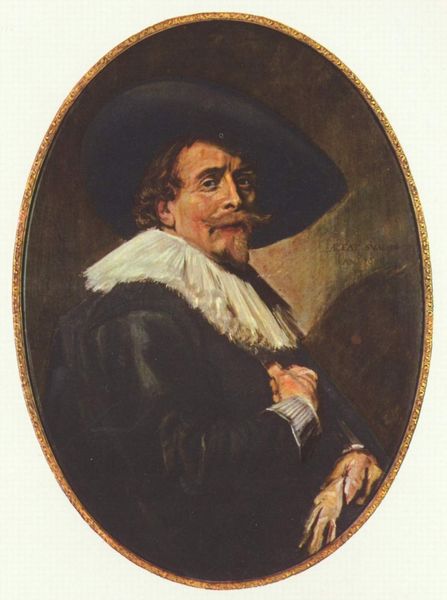
painting, oil-paint
#
portrait
#
baroque
#
dutch-golden-age
#
painting
#
oil-paint
#
flemish
#
genre-painting
Dimensions: 83 x 67.3 cm
Copyright: Public domain
Curator: This is Frans Hals’ "The Laughing Cavalier", painted in 1624. Look at the way Hals has captured the personality; it’s simply brimming with life! Editor: Yes, he definitely strikes an intriguing pose. I’m immediately struck by his…confidence, I suppose. The eyes lock onto yours, and that meticulously styled mustache practically screams bravado. It’s a painting of immense swagger. Curator: Indeed. It’s oil on canvas, a technique allowing for that incredible detail in the lace and the embroidery, which, by the way, signifies wealth and status. The sitter is someone of importance, even though his identity remains a mystery. Editor: Status is definitely communicated. The expensive clothing serves to signal privilege, while the cavalier's assuredness seems to reflect the consolidation of power in the Dutch Golden Age, as well as questions about class. What about gender and social constructs: how did they relate with a powerful figure like this cavalier? Curator: Absolutely. Think about the booming Dutch economy, the powerful merchant class... Hals was often commissioned by these newly wealthy citizens, individuals keen to portray their success. The “laughing” part of the title can be deceptive because of the slightly sarcastic smirk he projects. It shows a worldliness gained through both education and travel that became part of a person's identity, thus also raising some awareness about class structures, something relevant in present times as well. Editor: That worldliness seems pertinent. It speaks to an emergent bourgeois sensibility in that era, where public image became an ever-greater form of performance. So, to truly laugh at this painting is to appreciate all of the moving sociopolitical parts operating just below its shimmering surface. It almost reflects in today's popular culture as people are always ready to show a happy, "successful" version of themselves. Curator: Well said. It gives us so much insight not only into 17th century portraiture, but also that complex period in Dutch history when wealth and individualism transformed society. Editor: Indeed. A powerful reminder that what seems lighthearted on the surface often holds profound depth.
Comments
No comments
Be the first to comment and join the conversation on the ultimate creative platform.
